California dreaming on Nordic winter days
Stockholm, January 20, 2015 – When that Nordic winter sets in, I’ll admit I start dreaming of being a California girl.
If you spent half of your life in Canada and the other half in Sweden, slogging through months of darkness that is winter in the northern hemisphere, you too would dream of sunny days on a warm sandy beach.
It's not the cold that gets to you living in Sweden. Winters here are typically mild, usually hovering around 0 Celsius, a long way from the biting -25C cold spells I grew up with in Montreal.
It's the darkness that hits you.
 Stockholm at sunset. November, 2011. (AFP / Jonathan Nackstrand)
Stockholm at sunset. November, 2011. (AFP / Jonathan Nackstrand)Big black hood over your head
In Stockholm in the middle of winter, daylight breaks around 9:00 am, and by 2:00 pm night is already falling. The sun hangs low on the horizon, if you can see it at all -- most days are overcast and daylight merely means the sky shifts to a paler shade of grey.
When I go to work in the morning it's dark. When I go home at the end of the day it's dark.
The darkness can be oppressive. It feels like someone has dropped a big black hood over your head and you can't shake it off.
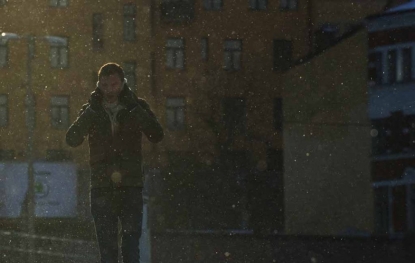 Covering up against the elements. February, 2012. (AFP / Jonathan Nackstrand)
Covering up against the elements. February, 2012. (AFP / Jonathan Nackstrand)November is the month when it really starts to be felt. In 2014, Stockholm registered just five hours of sunlight for the entire month of November. Five.
The days are shortest around the December 21 winter solstice. After that they slowly start to get longer again, but the real change isn't felt until April or May, when the sun returns to being high in the sky.
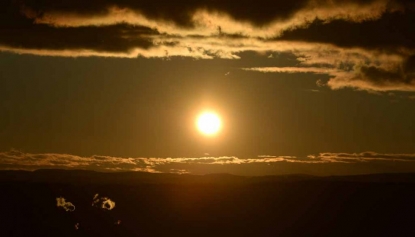 The sun rises over Sweden, February, 2015. (AFP / Christof Stache)
The sun rises over Sweden, February, 2015. (AFP / Christof Stache)SAD cases soar
During the darkest months, some people suffer from Seasonal Affective Disorder (SAD), more commonly known as the winter blues. The condition leaves people depressed, lethargic, and often leads to increased alcohol and sweets consumption.
 The Stockholm harbor. January, 2010. (AFP / Olivier Morin)
The Stockholm harbor. January, 2010. (AFP / Olivier Morin)Experts say that up to 90 percent of Swedes are affected by SAD to some extent. Luckily I don't suffer too much. (I just find myself suddenly daydreaming of those beach getaways to the Seychelles, Maldives and Mauritius, waves gently lapping the shore as I sip drinks with colorful umbrellas...)
Swedes change in winter. After having strolled carefree and smiling through the sunny streets all summer, they suddenly bustle past, head down against the cold and wind, hurrying to get inside again.
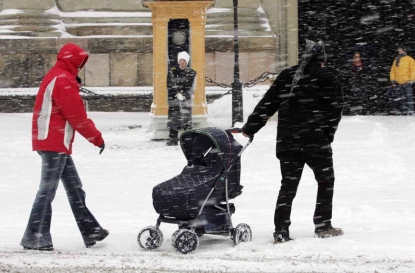 Bustling past the royal castle in Stockholm, February, 2005. (AFP / Sven Nackstrand)
Bustling past the royal castle in Stockholm, February, 2005. (AFP / Sven Nackstrand)Hibernating indoors
Social life dwindles, as people cocoon indoors (in their typically on-trend Ikea-decorated homes) and binge-watch Netflix.
And why not? It's only 7:30 pm and you've finished that steaming plate of pasta you made to warm yourself up. It's been dark for five hours, it must be bedtime soon, right? It looks like midnight outside, there's not a soul on the street. Who feels like going out?
If you do head out to the clubs, restaurants and bars, you're sure to find a crowd, don't get me wrong -- Stockholm has a lively night scene. But if you've gone home after work, it requires a special effort to drag yourself out the door again. With night falling so early, it just feels natural to live by the Lutheran "early to bed, early to rise" Swedish culture. (Rising early also means you maximize your daylight hours, instead of staying up late and sleeping away the next morning's daylight).
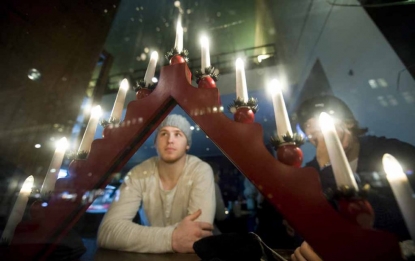 Candles in Stockholm in December, 2010. (AFP / Jonathan Nackstrand)
Candles in Stockholm in December, 2010. (AFP / Jonathan Nackstrand)Get outside
There are ways to make it through the dim winter, methods recommended by both experts and those who have lived through it for years.
The most important is to get outside during the daylight hours so your body can get its fill of vitamin D, even if only for 20 minutes a day.
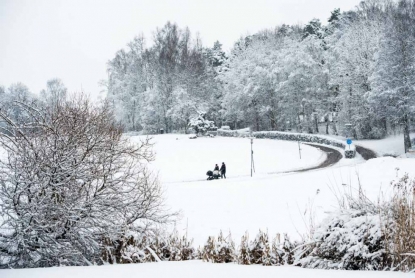 Strolling with babies in the Stockholm snow. (AFP / Jonathan Nackstrand)
Strolling with babies in the Stockholm snow. (AFP / Jonathan Nackstrand)Swedes flock outdoors on weekends, taking long walks in the woods, skiing or skating on Sweden's frozen lakes and waterways. The large green areas around Stockholm, such as Djurgaarden and Haga Park, are full of people on brisk walks, pushing prams or taking romantic strolls -- always stopping for a traditional "fika", or coffee break, somewhere along the way. After spending a week at work, a whole day spent cooped up indoors when you can be out enjoying the fresh air is anathema to the Swedish soul.
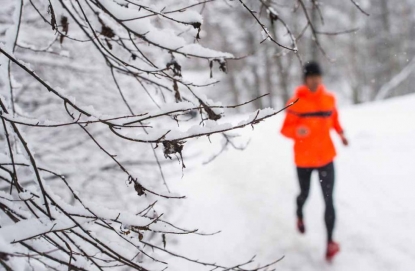 In the outdoors, January, 2015. (AFP / Jonathan Nackstrand)
In the outdoors, January, 2015. (AFP / Jonathan Nackstrand)Let there be light
Another way of fighting the winter blues is to light up: Swedes have tons of decorative lights in their homes in winter, especially around Christmas when special festive Advent candlesticks glow in almost every window in homes, shops and offices.

Click here on watch on a mobile device
Buildings, trees and tree trunks are swept in strings of white electric lights, and tasteful light sculptures of moose and reindeer illuminate the night sky.
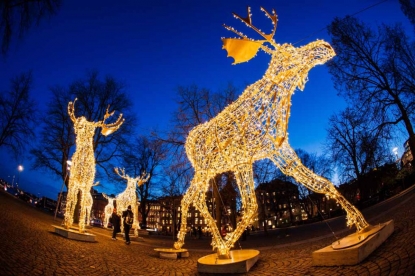 Electric moose light up Stockholm. (AFP / Jonathan Nackstrand)
Electric moose light up Stockholm. (AFP / Jonathan Nackstrand)Even breakfast is eaten by candlelight, a tradition I have come to love in our home. There's something peaceful and solemn about sitting in a quiet, dark kitchen, lit only by the warm glow of candles on the table, sipping a hot cup of strong coffee...
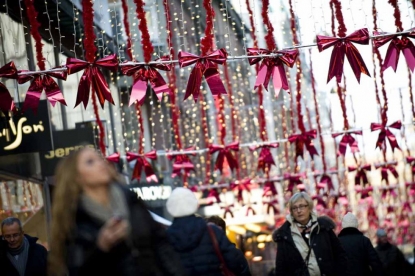 Christmas decorations color up Stockholm, November, 2010. (AFP / Jonathan Nackstrand)
Christmas decorations color up Stockholm, November, 2010. (AFP / Jonathan Nackstrand)Let it snow
Some winters there's very little snow, and those winters are the darkest: the snow reflects light and brightens things up.
Snow also usually means colder temperatures, which often brings clear blue skies and glorious winter sunshine.
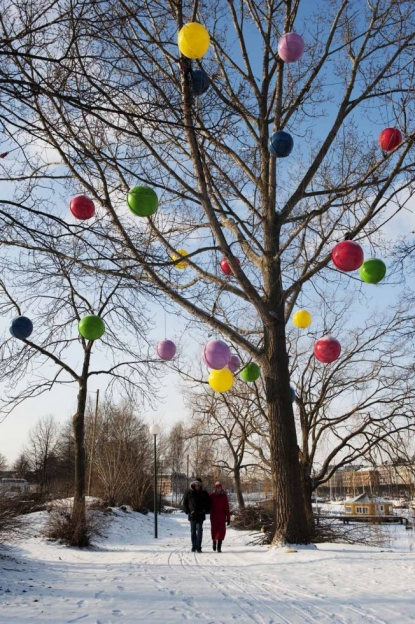 Walking in a colorful winter wonderland. February, 2012. (AFP / Jonathan Nackstrand)
Walking in a colorful winter wonderland. February, 2012. (AFP / Jonathan Nackstrand)We haven’t had much snow this winter but on this dark evening, as I look out the window of the AFP office, big, wet snowflakes are dancing and twirling outside, caught in the light of a streetlamp.
And despite my California dreams, I find myself smiling at the sight, longing to walk in the freshly-fallen snow.
Pia Ohlin is AFP’s deputy bureau chief in Stockholm.
 A church in Sweden's north. (AFP / Jonathan Nackstrand)
A church in Sweden's north. (AFP / Jonathan Nackstrand)

